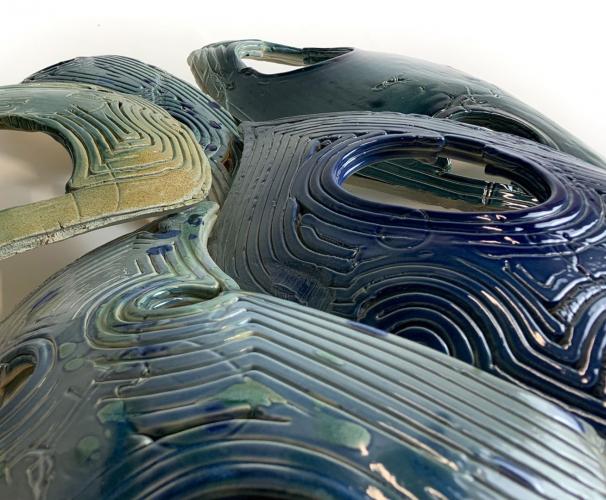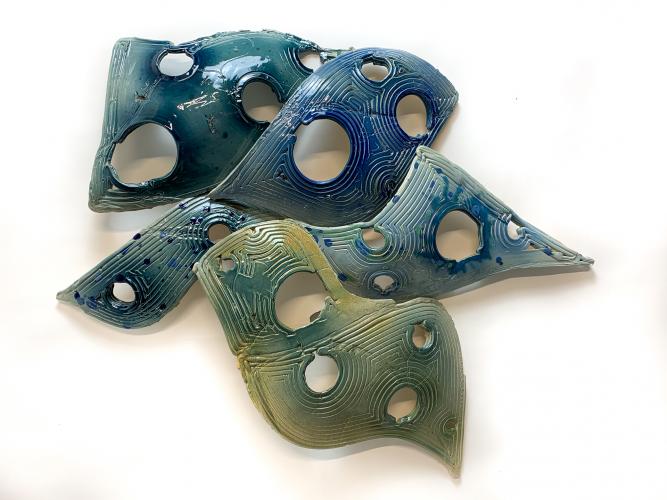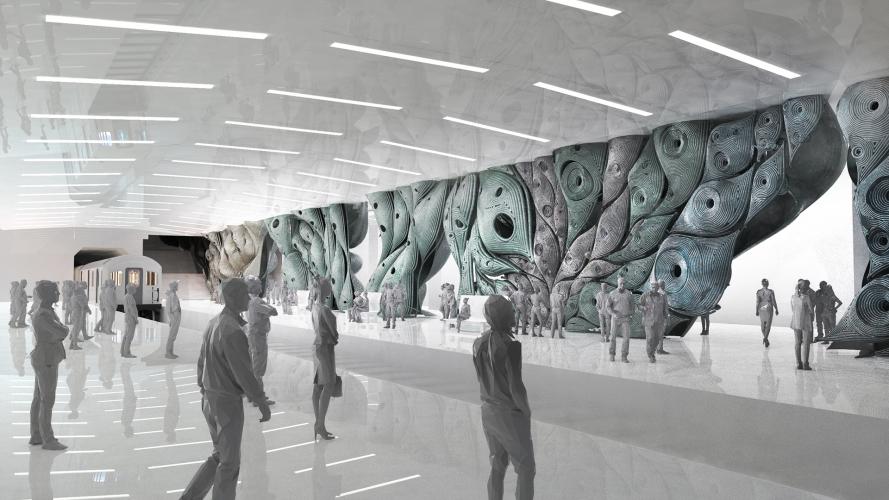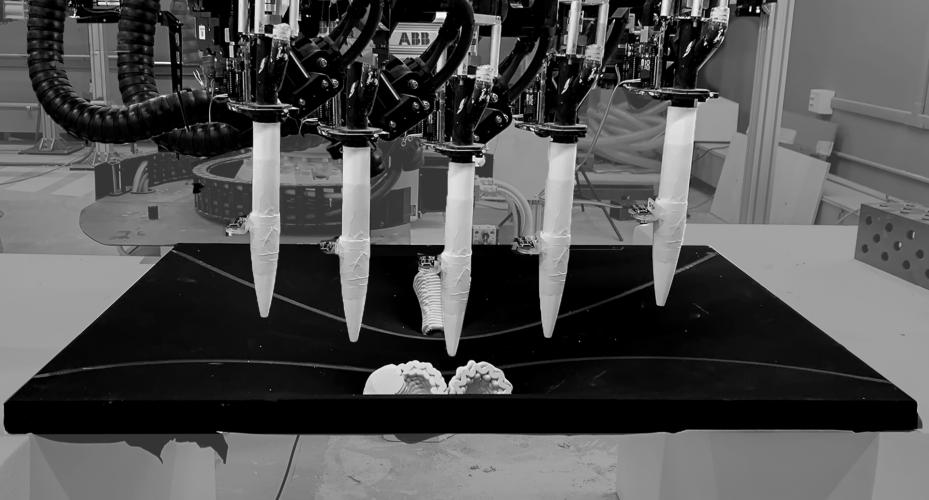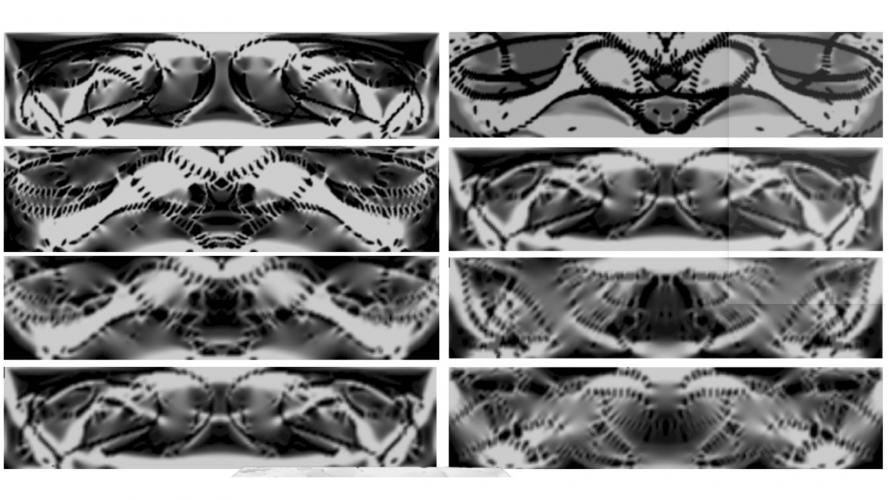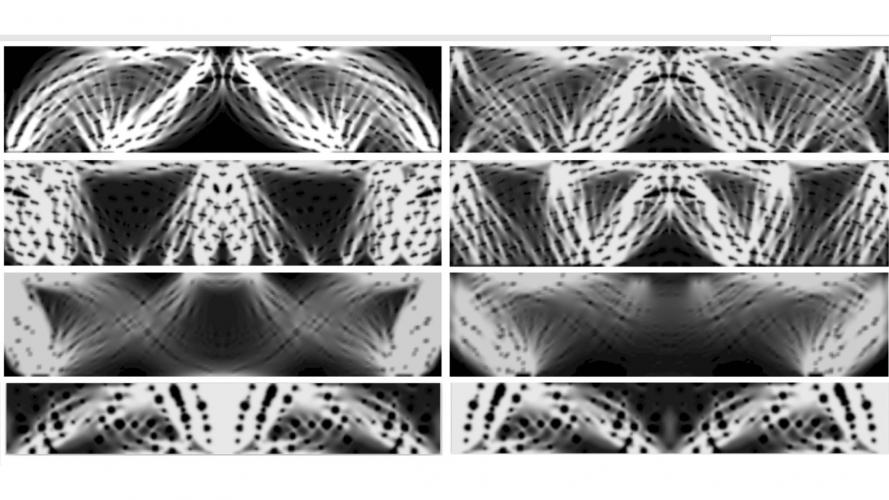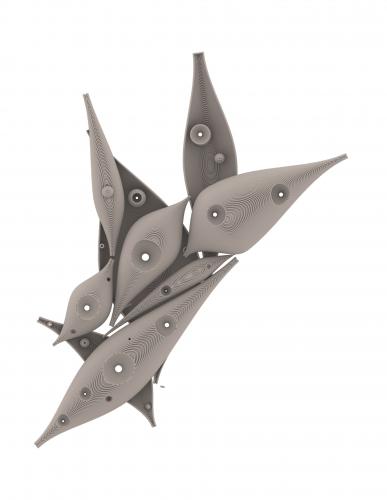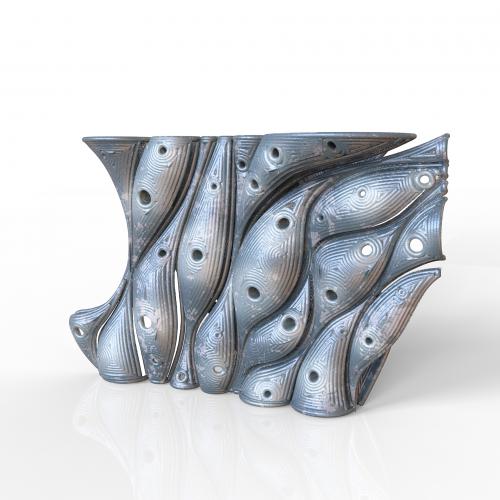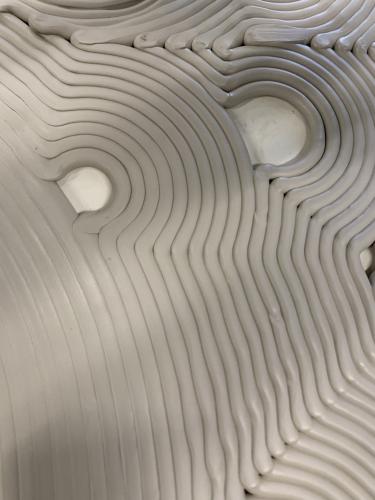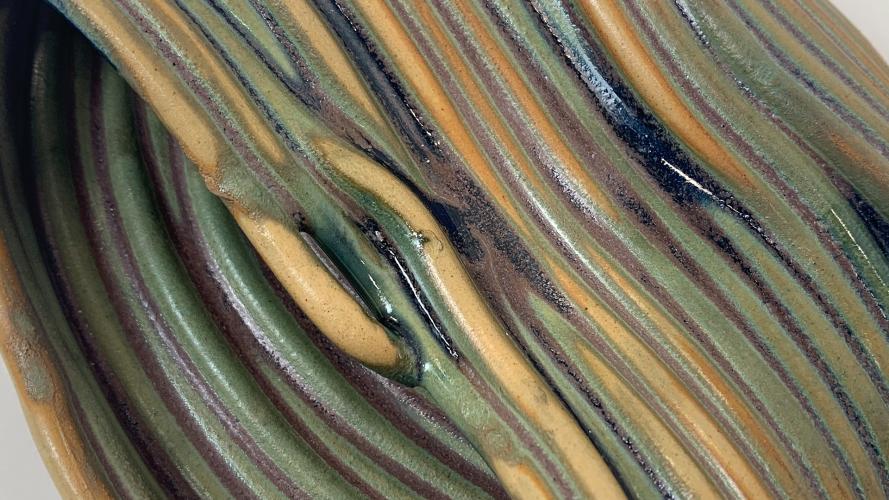Distortion
ARCH802, ARCH804, ARCH806, ARCH808
Students: Claire Moriaty, Deon Kim, Geng Liu
Instructors: Robert Stuart-Smith (ARCH802), Nathan King (ARCH806), Billie Faircloth (ARCH808), Jose-Luis García del Castillo y López & Jeffrey Anderson (ARCH804)
TAs: Patrick Danahy (ARCH802)
Distortion explores dynamics in both fabrication and design activation. Industry forming methods for Architectural Ceramics operate through industrial means of mass production that cannot achieve bespoke architectural production without wasteful and costly practices. While additive manufactured ceramics can be utilized for variable part fabrication there are geometries that are not easy to fabricate in wet clay, such as shallow arching curved surfaces which are prone to collapse without a mold for support. The research develops a method for additive manufacturing using re-usable fabric form-work to enable shallow-profiled geometries to be custom-fabricated in ceramics. Due to the complexity of the dynamics operating between the extrusion of wetclay and its impact on the form of the elastic fabric, the method also involved the development of a real-time robot manufacturing process that could adapt the position of the robot extrusion point to gravitation-induced changes in the form-work profile. This approach to dynamics was extended into a speculative proposal for a subway wall system that is capable of distorting ambient sound. The wall comprises of panels fabricated using the adaptive fabric form-work method, and assembled back-to-back to create a self-supporting cavity wall. Panels are connected using 3D printed ceramic connector elements that operate as vessels, each one being a closed volume with one opening through a hole in a wall panel. As trains pass near the wall, they generate intense air movement within the subway, evoking a sound reverberation within the connector vessels. Operating similar to air blown over the open top of a bottle, the connectors reverberate sound on their interior to distort and amplify the incoming sound waves. As each vessel is of a different size and proportion, they also create a range of acoustic affects as a train passes by. Similarly commuters within the subway are able to engage with the wall and with others on the other side of the wall through sound, providing a means for participatory engagement.
